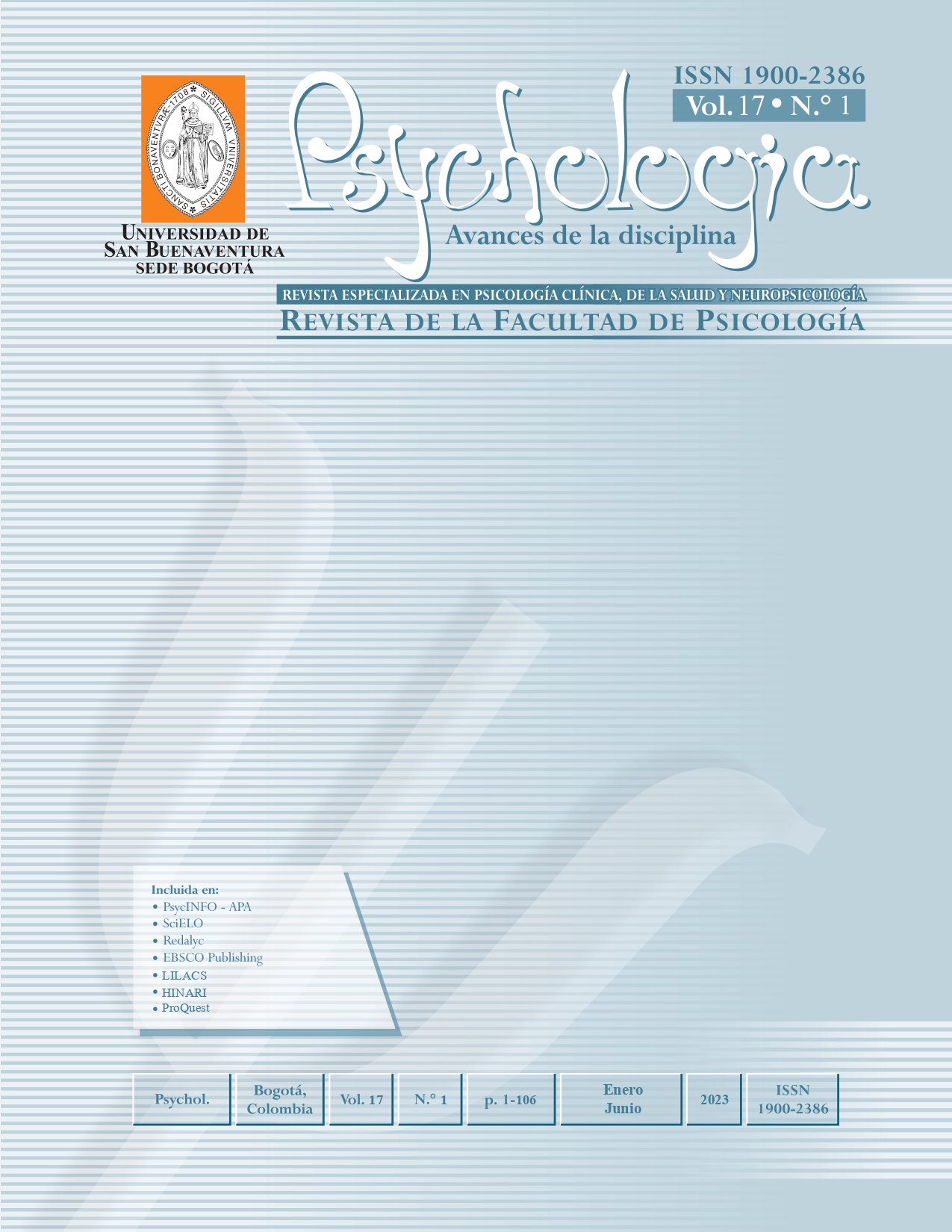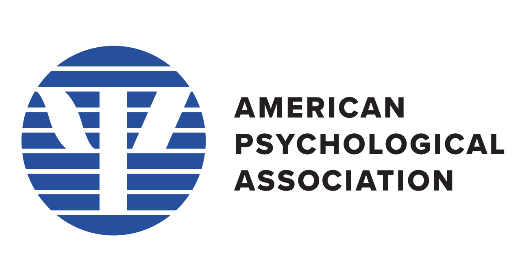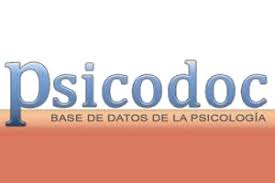This journal provides open, immediate access to its contents, based on the principle that offering the public free access to research helps to promote a higher global exchange of knowledge.
As such, all journal articles are published under a Creative Commons Attribution-NonCommercial-ShareAlike 4.0 International License (CC BY-NC-SA), by which commercial use of the original work or its possible derived works is not allowed, and the distribution thereof must be done with the same license elements regulating the original work.
http://creativecommons.org/licenses/by-nc-sa/4.0/
Abstract
Severe conduct disorder is a notable social and mental health problem in child and adolescent population. Here we present the results of a descriptive quantitative research with the general objective of characterizing aggressiveness in a group of adolescents with this type of disorder. The study was carried out with young people from a preventive detention center who were in the process of judicialization, not yet sanctioned, but deprived of their liberty. A total of 115 males were selected by convenience and five measurement instruments were applied: the Motives for Aggression Inventory, the Aggressive Situations and Behavior Inventory, the Buss-Perry Aggression Questionnaire, the Proactive and Reactive Aggressiveness Questionnaire, and the Appetitive Aggressiveness Scale. The main motive for aggression was to get something they wanted, they were aggressive for no reason, they frequently expressed anger, threatened people they knew, got angry when they had disagreements, believed that others made fun of them behind their backs, felt good after physically or verbally assaulting someone, carried weapons to use in fights, and considered that fighting was the only thing they wanted to do in life.
References
Agnew, R. (1985). A revised strain theory of delinquency. Social Forces, 64(1), 151-167.
American Psychiatric Association. (2013). The Diagnostic and Statistical Manual of Mental Disorders (5th ed.). American Psychiatric Association
Bird, J. C., Fergusson, E. C., Kirkham, M., Shearn, C., Teale, A. L., Carr, L., Stratford, H. J., James, A. C., Waite, F., & Freeman, D. (2021). Paranoia in patients attending child and adolescent mental health services. The Australian and New Zealand journal of psychiatry, 55(12), 1166-1177. https://doi.org/10.1177/0004867420981416
Bozsik, C., Körmendi, A., Inántsy-Pap, J., Pataky, N., Gádoros, J., & Halász, J. (2013). A reaktiv/proaktiv agresszió, a rideg/érzéketlen vonások és a viselkedési problémák kapcsolata magyar serdülőknél [The relationship between reactive/proactive aggression, callous/unemotional traits and behavioural problems in Hungarian adolescents]. Psychiatria Hungarica: A Magyar Pszichiatriai Tarsasag tudomanyos folyoirata, 28(1), 48-56.
Bushman, B. J., & Anderson, C. A. (2001). Is it time to pull the plug on the hostile versus instrumental aggression dichotomy? Psychological Review, 108(1), 273-279. https://doi.org/10.1037/0033-295x.108.1.273
Bushman, B. J., & Huesmann, L. R. (2010). Aggression. En: S. T. Fiske, D. T. Gilbert, & G. Lindzey (Eds.), Handbook of Social Psychology, Vol. 2 (pp. 833-863). John Wiley & Sons.
Cornell, D. G., Peterson, C. S., & Richards, H. (1999). Anger as a predictor of aggression among incarcerated adolescents. Journal of Consulting and Clinical Psychology, 67(1), 108-115. https://doi.org/10.1037/0022-006X.67.1.108
Dodge, K. A., & Coie, J. D. (1987). Social-information-processing factors in reactive and proactive aggression in children's peer groups. Journal of Personality and Social Psychology, 53(6), 1146-1158. https://doi.org/10.1037//0022-3514.53.6.1146
Euler, F., Steinlin, C., & Stadler, C. (2017). Distinct profiles of reactive and proactive aggression in adolescents: associations with cognitive and affective empathy. Child and adolescent psychiatry and mental health, 11, 1. https://doi.org/10.1186/s13034-016-0141-4
Farrington, D. P. (2009). Conduct disorder, aggression, and delinquency. In R. M. Lerner & L. Steinberg (Eds.), Handbook of adolescent psychology: Individual bases of adolescent development (pp. 683-722). John Wiley & Sons, Inc. https://doi.org/10.1002/9780470479193.adlpsy001021
Fonagy, P., & Luyten, P. (2018). Conduct problems in youth and the RDoC approach: A developmental, evolutionary-based view. Clinical Psychology Review, 64, 57-76. https://doi.org/10.1016/j.cpr.2017.08.010
Fontaine, R. G. (2007). Toward a conceptual framework of instrumental antisocial decision-making and behavior in youth. Clinical Psychology Review, 27(5), 655-675.
Frick, P. J. (2004). Developmental pathways to conduct disorder: Implications for serving youth who show severe aggressive and antisocial behavior. Psychology in the Schools, 41(8), 823-834. https://doi.org/10.1002/pits.20039
Frick, P. J. (2016). Current research on conduct disorder in children and adolescents. South African Journal of Psychology, 46(2), 160-174. https://doi.org/10.1177/0081246316628455
Hartsell E. N. (2021). The relationship between psychological symptom ratings and crime in juvenile justice system involved young people. Criminal Behaviour and Mental Health: CBMH, 31(1), 13-30. https://doi.org/10.1002/cbm.2169
Hill J. (2003). Early identification of individuals at risk for antisocial personality disorder. The British Journal of Psychiatry. Supplement, 44, S11-S14. https://doi.org/10.1192/bjp.182.44.s11
Junewicz, A., & Billick, S. B. (2020). Conduct Disorder: Biology and Developmental Trajectories. The Psychiatric quarterly, 91(1), 77-90. https://doi.org/10.1007/s11126-019-09678-5
Kelly, E. L., Novaco, R. W., & Cauffman, E. (2019). Anger and depression among incarcerated male youth: Predictors of violent and nonviolent offending during adjustment to incarceration. Journal of Consulting and Clinical Psychology, 87(8), 693-705. https://doi.org/10.1037/ccp0000420
Kempes, M., Matthys, W., de Vries, H., & van Engeland, H. (2005). Reactive and proactive aggression in children A review of theory, findings and the relevance for child and adolescent psychiatry. European Child & Adolescent Psychiatry, 14(1), 11-19. https://doi.org/10.1007/s00787-005-0432-4
Mathias, C. W., Stanford, M. S., Marsh, D. M., Frick, P. J., Moeller, F. G., Swann, A. C., & Dougherty, D. M. (2007). Characterizing aggressive behavior with the Impulsive/Premeditated Aggression Scale among adolescents with conduct disorder. Psychiatry Research, 151(3), 231-242. https://doi.org/10.1016/j.psychres.2006.11.001
Meyer-Parlapanis, D., Weierstall, R., Nandi, C., Bambonyé, M., Elbert, T., & Crombach, A. (2016). Appetitive Aggression in Women: Comparing Male and Female War Combatants. Frontiers in Psychology, 6, 1972. https://doi.org/10.3389/fpsyg.2015.01972
Morgan, J. E., Bowen, K. L., Moore, S. C., & Van Goozen, S. H. M. (2014). The relationship between reward and punishment sensitivity and antisocial behavior in male adolescents. Personality and Individual Differences, 63, 122-127. https://doi.org/10.1016/j.paid.2014.01.054
Novaco, R. W. (1994). Anger as a risk factor for violence among the mentally disordered. En: J. Monahan & H. J. Steadman (Eds.), Violence and mental disorder: Developments in risk assessment (pp. 21-59). University of Chicago Press.
Olino, T. M., Seeley, J. R., & Lewinsohn, P. M. (2010). Conduct disorder and psychosocial outcomes at age 30: early adult psychopathology as a potential mediator. Journal of Abnormal Child Psychology, 38(8), 1139-1149. https://doi.org/10.1007/s10802-010-9427-9
Orjiakor, C. T., Weierstall, R., Bowes, N., Eze, J. E., Ibeagha, P. N., & Obi, P. C. (2022). Appetitive aggression in offending youths: Contributions of callous unemotional traits and violent cognitive patterns. Current Psychology: A Journal for Diverse Perspectives on Diverse Psychological Issues, 41(4), 2496-2505. https://doi.org/10.1007/s12144-020-00759-4
Pederson, C. A., Fite, P. J., & Bortolato, M. (2018). The role of functions of aggression in associations between behavioral inhibition and activation and mental health outcomes. Journal of Aggression, Maltreatment & Trauma, 27(8), 811-830. https://doi.org/10.1080/10926771.2017.1370053
Pisano, S., Muratori, P., Gorga, C., Levantini, V., Iuliano, R., Catone, G., Coppola, G., Milone, A., & Masi, G. (2017). Conduct disorders and psychopathy in children and adolescents: aetiology, clinical presentation and treatment strategies of callous-unemotional traits. Italian Journal of Pediatrics, 43(1), 84. https://doi.org/10.1186/s13052-017-0404-6
Robins, L. N., & Price, R. K. (1991). Adult disorders predicted by childhood conduct problems: results from the NIMH Epidemiologic Catchment Area project. Psychiatry, 54(2), 116-132. https://doi.org/10.1080/00332747.1991.11024540
Rohde, P., Lewinsohn, P. M., Seeley, J. R., Klein, D. N., Andrews, J. A., & Small, J. W. (2007). Psychosocial functioning of adults who experienced substance use disorders as adolescents. Psychology of Addictive Behaviors: Journal of the Society of Psychologists in Addictive Behaviors, 21(2), 155-164. https://doi.org/10.1037/0893-164X.21.2.155
Romero-Martínez, Á., Sarrate-Costa, C., & Moya-Albiol, L. (2022). Reactive vs proactive aggression: A differential psychobiological profile? Conclusions derived from a systematic review. Neuroscience and Biobehavioral Reviews, 136, 104626. https://doi.org/10.1016/j.neubiorev.2022.104626
Simonoff, E., Elander, J., Holmshaw, J., Pickles, A., Murray, R., & Rutter, M. (2004). Predictors of antisocial personality. Continuities from childhood to adult life. The British Journal of Psychiatry: The Journal of Mental Science, 184, 118-127. https://doi.org/10.1192/bjp.184.2.118
Talia, A., Duschinsky, R., Mazzarella, D., Hauschild, S., & Taubner, S. (2021). Epistemic Trust and the Emergence of Conduct Problems: Aggression in the Service of Communication. Frontiers in Psychiatry, 12, 710011. https://doi.org/10.3389/fpsyt.2021.710011
Weierstall, R., & Elbert, T. (2011). The Appetitive Aggression Scale-development of an instrument for the assessment of human's attraction to violence. European Journal of Psychotraumatology, 2, 10.3402/ejpt.v2i0.8430. https://doi.org/10.3402/ejpt.v2i0.8430
Weierstall, R., Haer, R., Banholzer, L., & Elbert, T. (2013a). Becoming cruel: Appetitive aggression released by detrimental socialisation in former Congolese soldiers. International Journal of Behavioral Development, 37, 505-513. https://doi.org/10.1177/0165025413499126.
Weierstall, R., Hinsberger, M., Kaminer, D., Holtzhausen, L., Madikane, S., & Elbert, T. (2013b). Appetitive aggression and adaptation to a violent environment among youth offenders. Peace and Conflict: Journal of Peace Psychology, 19(2), 138-149. https://doi.org/10.1037/a0032489
Wilson, L. C., & Scarpa, A. (2011). The link between sensation seeking and aggression: a meta-analytic review. Aggressive behavior, 37(1), 81-90. https://doi.org/10.1002/ab.20369
Hawkins, J. D. (2000). Predictors of youth violence. US Department of Justice, Office of Justice Programs, Office of Juvenile Justice and Delinquency Prevention.





















